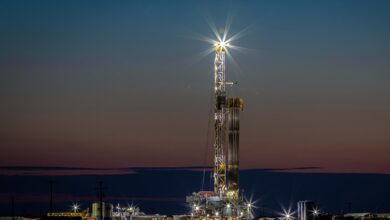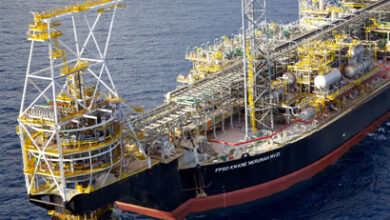State of offshore industry: a look at where we are now
By Linda Hsieh, Editor & Publisher
While the drilling industry has always been cyclical and is used to seeing market ups and downs, this year’s COVID-induced oil price crash has felt particularly harsh. Part of the reason is certainly the speed and scale of the crash, but it’s also because many parts of the industry – offshore drillers, in particular – entered 2020 believing this would finally be the start of a period of growth and renewal.
They had already endured five to six years of a down market with very low margins. They had cut cost almost to the bone. They had continued to push performance to new heights, a requirement for survival in an ultra-competitive market.
And for a while, it really looked like the tide was turning. Oil prices had appeared stable around the $60-65 range. E&P cash flows seemed to be returning to 2013-2014 levels, and a significant number of FIDs were expected for the year.
Of course, 2020 has turned out to be nothing resembling growth and renewal. In fact, it feels like a trite horror movie where the main character makes his escape from the monster and flags down a car in a middle-of-nowhere road, believing it will carry him to safety… except the car is actually carrying another monster even scarier than what he was running from. At times, it feels like 2020 has reached that level of craziness.
Where are we now?
So, how exactly have the wild market swings this year impacted the drilling industry? In late July, Westwood Global Energy hosted a webinar providing an overview of the state of the offshore drilling industry. While the information presented was mostly downbeat, there were a few nuggets of encouraging news (relatively speaking). Some highlights from that report are:
- The extent of oil demand destruction at its height in April was likely overstated. In fact, the International Energy Agency has adjusted its initial April projection of a 9.3 million bbl/day decline in demand this year to 8.1 million bbl/day as of August.
- Recovery in oil demand for Q3/Q4 this year, however, “will be slower than previously expected as we see smaller-scale regional lockdowns in numerous economies,” Westwood Head of Offshore Thom Payne pointed out. Q4 consumption will likely remain 3-4 million bbl/day lower year on year, he added.
- Compared with its initial forecast (made in Q4 2019) for $67 billion in offshore EPC awards for 2020, Westwood now expects only $19.5 billion in EPC awards this year. That’s a 70% reduction in spend, and 2020 is likely to see the lowest order value in over 20 years.
- A surge in contract terminations, suspensions and declined options has resulted in the loss of more than 14,000 days and nearly $1.8 billion in rig contract backlog since March. “That’s somewhat toned down, so fortunately it’s a bit quieter on that front now,” said Terry Childs, Head of Westwood’s RigLogix.
- The 46 new contracts that were awarded from mid-March to mid-July compare with 172 awarded in the same period a year ago, indicating a clear drop in activity. “On the plus side, there are still over 160 tenders for drilling campaigns that still have 2020 or 2021 start dates,” Mr Childs said, although he cautioned that some of those will likely be pushed to 2022 or even canceled.
- The trend of accelerated rig attrition is going to continue, with SPS due dates being a key driver. Mr Childs noted that 245 rigs have SPS dates either past-due or coming up within six months, so the list of candidates for attrition is long. There are also 74 cold-stacked rigs, 60 of which have been stacked for more than three years. “I can’t see any demand scenario that would account for bringing these rigs back into service,” he said.
- On the other hand, the industry “can’t retire our way out of this slump,” Mr Childs said, pointing to the newbuild rigs waiting in the wings. So far this year, 11 new jackups have been delivered, while 10 jackups, 13 semisubmersibles and three drillships have left the rig fleet. An interesting dynamic is that, in the current market, a new rig might already be 7 or 8 years old by the time it actually gets delivered. He added: “The amount of money that it will take to get some of those rigs into service may preclude them from getting delivered at all.” DC
Reach Linda Hsieh at linda.hsieh@iadc.org.





